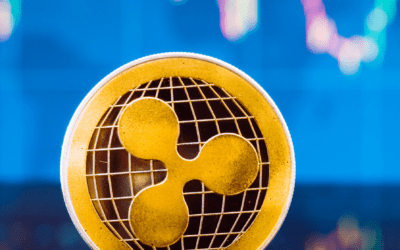Dateline: Hanoi, Vietnam
Let’s get back to basics today.
While Nomad Capitalist has covered a lot of opportunities and investments here in Southeast Asia, I figured it would be helpful to review the entire ASEAN region that makes up this part of the world and give you an introductory, bird’s eye view at each country and what to make of it. Looking out the window of my hotel room in Hanoi, I realize how quickly things change in this part of the world.
Even though this is the same building I stayed at no more than five years ago, the capital of Vietnam feels and looks like a completely different city, complete with venture capital outfits and go-go business. Things are changing fast here in Southeast Asia and as the balance of power shifts from West to East, there is perhaps no greater place to do business in and learn about.
However, Southeast Asia cannot be lumped together and generalized as a single place.
There are ten diverse countries that each have their own strengths, weaknesses, and quirks that must be kept in mind. It’s almost needless to say that a comprehensive outline of ten countries cannot be done in a single article – but here are some quick facts about all of the ten members of ASEAN, or the Association of Southeast Asian Nations, which itself consists of all countries in the region. Analysts have been speaking highly of this region for years, and it remains an excellent outpost for expat entrepreneurs as well as investors.
Investing in the ASEAN region
Singapore
The de-facto financial hub of Southeast Asia, Singapore is one of the most capitalistic societies in the world. One out of every six residents of the city-state is a millionaire and its stable banking system, low taxes, and immigration-friendly policies have led investors and entrepreneurs alike to its shores.
With that said, immigration has become harder in the past decade or so. Wealth has brought the ability to be selective and while a multi-millionaire can move to Singapore rather easily, it’s far more difficult for most others.
Indonesia
Southeast Asia’s largest country, and the world’s fourth most populous with over 240 million inhabitants. The sheer size of the Indonesian market means that there are a huge amount of opportunities – but compared to China and India, it is still underexploited by international investors and businessmen. The country’s infrastructure is still rather poor. A lack of efficient public transportation and the fact that Indonesia is made up of about 18,000 islands makes getting around, both for people and products, difficult.
Brunei
Only around 400,000 people live in Brunei, but this oil-rich nation located on the island of Borneo beats out even Singapore by wealth on a per capita basis. Brunei has zero debt, and the government is focused on diversifying its economy away from the oil and gas industry for long-term sustainability. Brunei is ruled by a Sultan who is in the process of converting the nation’s legal system to one based on Sharia law.
It is unclear what repercussions, if any, this may have for its broader economy in the future. The oil and wealth will probably stay, though.
The Philippines
This country has something that with the exception of India, is unique in Asia – a huge amount of skilled, English speaking workers that are willing to work for cheap. The Philippines has an unusually large services sector for an emerging market, and is ideal for outsourcing and doing business without having to worry about a language barrier.
However, the Philippines is infamous for its bureaucracy and corruption. Those who want to ship products through should be wary – for now.
Laos
This landlocked country is the only one in Southeast Asia that shares borders with five others, giving it many opportunities. A high-speed rail project is already underway that will link the Southern Chinese city of Nanjing with Bangkok while passing through Laos, and the potential for being a transportation hub is enormous.
While quickly changing, Laos is still undeveloped compared to most others in Asia. Superhighways and rail lines are still under construction, and the non-adventurous might consider waiting a while.
Myanmar
Unless North Korea decides to open for business, Myanmar is Southeast Asia’s final frontier. The nation was once one of Asia’s richest but was been ruled by a military junta for several decades since the 1960s. [ED. NOTE: This just goes to show how times change, and why you must go where you are treated best.] This has changed, and the result is a country of over 60 million people that are optimistic about their newfound freedom but need basic services. The entrepreneurship opportunities would be endless if it weren’t for the extreme difficulty of doing business in Myanmar.
Many investments and foreign business laws are either vague, or haven’t even been implemented yet. The more cautious may want to wait a few more years.
Vietnam
With wages and factory upkeep costs in China rising as the nation shifts its economy to one based on consumption and services, a lot of jobs have moved to Vietnam.
Companies such as Nike, Samsung, Intel, and more have built multi-billion dollar factories to benefit from Vietnam’s skilled manufacturing workforce. Inflation has historically been a problem in Vietnam, though. The country suffered hyperinflation from 1987 to 1992, and inflation was over 10% from 2008 to 2011.
Thailand
he largest car manufacturer in Southeast Asia, the largest rice exporter in the world, and a capital that was more visited than any other city by international tourists in 2013. The Thai economy has some of everything.
The country is the second largest investor in the emerging economies of Laos and Myanmar (behind China) and will likely reap the rewards. Coups are “a thing” in Thailand and while there have been 17 in the past hundred years, the country seems to always bounce back. Free elections are usually held a year or two after one, but underlying political tensions have not gone away.
Cambodia
A nation that has suffered a lot under the Khmer Rouge, Cambodia is poorer than any other country in Southeast Asia on average – however, this may not be the case for long. It’s common to see economic growth of over 10% a year in Cambodia, and there has not been a single year with negative GDP growth since Pol Pot left power.
As typical with all of Southeast Asia’s less-developed nations, Cambodia suffers from corruption and inefficiency. But this hasn’t stopped plenty of people from making money off the country’s many opportunities.
[ED. NOTE: Cambodia remains one of our favorite places to invest on earth despite its frontier market status.]
Malaysia
The Malaysian economy benefits greatly from its multiculturalism. There is a large population of Muslims, Chinese, and Indians – which equates to many rich Middle-Easterners, Chinese, and Indians bringing their money in because of a sense of familiarity. Malaysia’s capital of Kuala Lumpur is the world’s largest Islamic finance center. Tensions still exist, however.
The ethnic Malay majority have implemented policies that favor themselves. Housing discounts, employment preferences, and even Malay-only mutual funds have created resentment among the Indian and Chinese minorities. Southeast Asia’s growth is enormous, and there are possibilities for every kind of investor or entrepreneur.
A stock trader, manufacturer, property flipper, or outsourcer will each find a place to suit their style. Kuala Lumpur is a very westernized place to live, too.
Whichever way you want to do business, it’s better to do it here than in the western world. The developed countries operate with a high amount of efficiency, the emerging markets are an entrepreneur’s playground, and almost everywhere has low taxes. But it’s best to act now. In five years, Myanmar might already have a successful pizza chain.









